Chapter 10 - aerospace h10 PDF

| Title | Chapter 10 - aerospace h10 |
|---|---|
| Author | jonas janssens |
| Course | Romeinse godsdienst |
| Institution | Katholieke Universiteit Leuven |
| Pages | 32 |
| File Size | 1.2 MB |
| File Type | |
| Total Downloads | 5 |
| Total Views | 140 |
Summary
aerospace h10...
Description
Introduction to Aerospace Structures and Materials Dr. ir. R.C. (René) Alderliesten
Introduction to Aerospace Structures and Materials
Introduction to Aerospace Structures and Materials
R.C. Alderliesten
Delft University of Technology Delft, The Netherlands
Introduction to Aerospace Structures and Materials by R.C. Alderliesten, Delft University of Technology is licensed under a Creative Commons Attribution-NonCommercial-ShareAlike 4.0 International License, except where otherwise noted. Cover image CC-BY TU Delft is a derivation of two images by: Christopher Boffoli, Big Appetites Studio, Seattle, Washington, USA, (http://bigappetites.net), who graciously agreed for us to use his Public Domain photograph of the Boeing 787 fuselage in high resolution, and by Gillian Saunders-Smits, Delft University of Technology with her photograph of a Fokker F100 Cockpit Structure (CC-BY-SA 4.0). The final cover design was made by Marco Neeleman, Delft University of Technology Library. Every attempt has been made to ensure the correct source of images and other potentially copyrighted material was ascertained, and that all materials included in this book has been attributed and used according to its license. If you believe that a portion of the material infringes someone else’s copyright, please the author directly on: [email protected] Partly funded by the TU Delft Extension School (online-learning.tudelft.nl) as part of the development of a Massive Open Online Course in Introduction to Aerospace Structures and Materials. ISBN E-Pub: 978-94-6366-077-8 ISBN hardcopy: 978-94-6366-074-7 ISBN PDF: 978-94-6366-075-4
10. Fatigue & durability
10.1 Introduction The topic of fatigue and durability is an important topic especially for aeronautical structures that are designed to be operated for several decades while assuring the structural integrity. Based upon the discussion in chapter 2, one can imagine that the material properties will change over time due to ageing of the material. Of course this can be accounted for by setting the appropriate allowables based upon the virgin material strength reduced by knock-down factors. However, although that represents a considerable part of the durability aspect, it will be insufficient for assuring structural integrity. The development of different design philosophies, presented in chapter 9, has proven that structural safety can only be assured with a coherent approach for the design and manufacturing phase, and subsequent operational life. An important aspect in this sense is the occurrence of fatigue and fatigue damage in structures that are repetitively loaded in service under various loading and environmental conditions. It will be explained in this chapter that fatigue cannot be treated independent of environmental aspects, part of the durability assessment. Therefore, fatigue and durability are discussed in relation to each other in this chapter. There are some remarks to be made here before stepping into the details. First, fatigue as a damage phenomenon has been discovered primarily in metallic structures (steel in train applications, aluminium in aircraft applications). What has been understood is that from the decades of experience and research is that repetitive (tensile) loading may lead to initiation and propagation of cracks that at some point in time may lead to component failure. It has also been understood how this aspect should be treated in design, which has led to the development of methods for designing against fatigue.
193
194 R.C. Alderliesten
What seems to be not well understood is that the relation between repetitive or cyclic loading and initiation or formation of damage applies to all engineering materials and material categories, but that the nature of damage and thus the relevant cyclic load cases may be different from one material category to another. This will be further explained in section 10.4.6. Another aspect requires more awareness is that designing against fatigue is not an additional task one should perform in the detail design phase. Designing against fatigue follows from the correct mind set of an engineer and should be incorporated already in the early conceptual and preliminary design. If fatigue has not been considered in the early design phases, the design work in the detail design phase will be merely repairing a fatigue sensitive structure.
10.2 Stress and strain concentrations 10.2.1 Definition
Figure 10.1 Illustration of evenly distributed stresses in a homogeneous material. (TU Delft, n.d., 10-1.jpg. Own Work.)
Following from the definitions provided in chapter 1, the stress in a material or component is basically calculated by dividing the applied force by the area. Or in equation form:
Introduction to Aerospace Structures and Materials 195
(10.1) This is considered correct if the material is homogeneous and in undisturbed in shape or geometry. This concept is illustrated in Figure 10.1. Independent on where a crosssection is considered, the stresses will be equal and evenly distributed through the material. These stresses can be calculated with equation (10.1) . However, if the geometry or the shape is changed, or if a cut, damage or crack is created in the material, then this forms a disturbance for the stress field. The load that has to be transferred through the material, illustrated in Figure 10.2 with stress lines, has to bypass the cut or damage.
Figure 10.2 Comparison between evenly distributed stress field (left) and a disturbed stress field (right). (TU Delft, n.d., 10-2.jpg. Own Work.)
Assuming that equation (10.1) is still valid, one should at the location of the disturbance calculate the stress by dividing the applied load F by the reduced cross section. Because the cross-sectional area is reduced while the load remains the same, this implies that the stress at the location of the disturbance is higher than in the undisturbed stress field. This higher stress is generally denoted as the nominal stress and is defined by
(10.2) This would suggest that if the failure of a disturbed or cracked component has to be predicted, one may assume that once the nominal stress
equals ultimate
strength of the material, failure would occur. However, before this equilibrium has been reached, the material or component will fail. This phenomenon is related to the fact that a concentration of stress is present at the tip of the notch. This is illustrated with the higher density of stress lines at the notch tip in Figure 10.2. The undisturbed and evenly distributed stress field has to bypass
196 R.C. Alderliesten
the notch, which at the location of the end of the notch creates a high concentration of stress. This phenomenon is indicated with the term stress concentration. To evaluate the stress concentration, a stress concentration factor
has been
defined
(10.3) Here the peak stress is the highest stress right at the edge or tip of the notch and the nominal stress
is calculated with equation (10.2).
Figure 10.3 Example of a flat sheet containing a hole loaded by a far field stress. (Alderliesten, 2011, 10-3.jpg. Own Work.)
Consider a flat panel with width W containing a circular hole with diameter D, see Figure 10.3, the nominal stress can be calculated with
(10.4) The stress concentration factor can then be calculated with equation (10.3). The only question at this point will be whether the peak stress is known. Because people in the past did not have the availability of dedicated software that can be used to calculate stresses at specific locations for any geometry under load, like with for example Finite Element Software, theoretical solutions were mathematically derived. These theoretical solutions were derived for the case of notches in sheets with infinite dimensions, because mathematically the boundary constraints for this case are exactly known. For the finite geometries, subsequently correction factors were determined based upon calculations or experimental data. These solutions were combined in handbooks, like for example Peterson’s Stress concentration factor (Pilkey, W.D., 1997).
Introduction to Aerospace Structures and Materials 197
A well-known general solution for an elliptical hold in an infinite sheet illustrated in Figure 10.4 is given by:
(10.5) This means that the stress concentration factor for a circular hole in an infinite sheet is equal to
= 3. This value is indifferent from the hole diameter. The relation
between the peak stress at the notch and the nominal stress in the remaining crosssection section remains 3, independent what hole diameter is considered.
Figure 10.4 Illustration of an elliptical hole in an axially loaded infinite sheet. (Alderliesten, 2011, 10-4.jpg. Own Work.)
An important remark has to be made. When introducing the stress concentration factor
and the peak stress at the notch edge, it was argued that the component
would fail before the nominal stress
would have reached the ultimate strength
of the material. Implicitly, this explanation and subsequent derivation may lead to the assumption that failure would thus occur when the peak stress
reaches the ultimate strength.
This is correct for materials that remain (approximately) linear elastic until failure, like for example fibre reinforced polymer composites. However, metallic materials usually plastically deform beyond the yield strength. In that case the behaviour will be different. This is illustrated in Figure 10.5. The stiffness of material reduces significantly beyond yielding (evident from the tangent slope
198 R.C. Alderliesten
compared to the linear elastic slope, represented by the Young’s modulus E). As a result of this local stiffness reduction, stress will be redistributed to the remaining material.
Figure 10.5 Effect of elastic-plastic material behaviour on the stress concentration. (TU Delft, n.d., 10-5.jpg. Own Work.)
The example given on the next page, illustrates that linear elastic materials have significant higher notch sensitivities than ductile materials. As a result, the failure strength of a notched component made of linear elastic materials is usually lower than that of equivalent elastic-plastic materials. On the other hand, as will be discussed later in this chapter, composites are usually less sensitive to fatigue loads. In other words, comparing aerospace aluminium alloys with carbon fibre composites, one may conclude that stress concentrations are detrimental for static loads on composites and detrimental for fatigue loads in aluminium alloys.
10.2.2 Saint Venant’s principle An important principle for structural analysis is the principle of Saint Venant. This principle states that the effect of a local disturbance, due to for example a notch, remains limited to the direct neighbourhood of the location of that notch, see Figure 10.6.
Introduction to Aerospace Structures and Materials 199
Figure 10.6 Illustration of Saint Venant’s principle: Stress disturbance due to a notch remains limited to the direct neighbourhood of the notch.(Alderliesten, 2011, 10-6.jpg. Own Work.)
Example: Effect of plasticity on Consider a straight sample containing a hole, as illustrated in Figure 10.5. If the material behaviour would be linear elastic until failure, like for example carbon fibre composite, this sample would fail when
, which means
that the gross strength of failure is equal to
For a sheet with infinite dimensions, this means that the failure strength is equal to
. For isotropic carbon fibre composite the failure strength can
be about 500 MPa, which means that failure of the sample would occur at 166 MPa. If the material behaviour would be elastic-plastic like for example aluminium
For a sheet with infinite dimensions, this means that the failure strength is equal to about 0.9
. With the failure strength of aluminium 2024-T3 of about
450 MPa, this implies failure would occur at about 405 MPa.
200 R.C. Alderliesten
Do consider however that the density of aluminium 2024-T3 is about 2.7 g/cm3 (providing a specific failure strength of 150 kN*m/kg), while the carbon fibre composite would be about 1.5 g/cm3 (thus a specific strength of 110 kN*m/kg)
The benefit of this principle is that the stress analysis of a loaded structure can be divided into a • global stress analysis (considering the structure as a whole) • local stress analysis of all details (containing notches) This approach is justified by the Saint Venant’s principle; a structure faces the same stresses due to applied loading indifferent of the presence of a notch at a certain location, except for the location of the notch itself.
10.2.3 Stress distribution around a hole For the sake of simplicity, the stress concentration factor has been introduced while limiting the discussion to the stress in the net section (nominal stress) and the stress at the notch edge (peak stress). However, it is obvious that the disturbance in stress created by the presence of the notch is somewhat more complex. The peak stress described by
is only at the location in the net section. Away from the hole
edge or along the contour of the notch, the stresses reduce and may even become negative.
Introduction to Aerospace Structures and Materials 201
Figure 10.7 Illustrations of the tangential stress distribution around a hole in an infinite sheet; tensile peak stress at φ= 0, π changes to compressive stress at φ= ± ½π (left); drop in stress away from the hole is more severe than along the notch contour.(Alderliesten, 2011, 10-7.jpg. Own Work.)
This is illustrated in Figure 10.7. In this figure a peak stress of 3S is present at both sides of the hole, while a compressive stress is present at the locations given by . This compressive stress may be understood when considering the stress lines similar to the ones illustrated in Figure 10.2. These stresses may be decomposed in stresses in horizontal and vertical direction, where the horizontal component just above and below the hole induce a compressive stress. Another aspect that can be observed in Figure 10.7 is that the stress drops quickly moving away from the hole, while the drop along the contour is significantly less. This implies there is a certain area along the notch contour that may be considered relatively high stressed (in the order of 0.9 ), where potentially fatigue cracks may initiate.
10.2.4 Superposition principle According to the definition given in section 10.2.1, the stress concentration factor is linearly dependent on the stress. Because stresses may be superimposed, the stress concentration factor
coming from a complex set of stresses may
be derived by addressing the different stress systems separately and subsequently superimposing the (peak) stresses at the notch.
202 R.C. Alderliesten
This is illustrated for a bi-axially loaded infinite sheet containing a hole in Figure 10.8. To calculate the stress concentration factor both stress systems and may be considered separately. For the stresses in direction
a peak stress of 3
may be
observed at the hole edge as indicated in the figure. However, looking at the stress then a compressive stress equal to
is present at that location (see Figure 10.7).
The actual peak stress at the considered location is therefore less than 3 . In other words, the stress concentration factor for uni-axially loaded sheet containing a hole is higher than the same sheet bi-axially loaded in tension. If the sheet would be bi-axially loaded by a tensile stress
and a compressive stress
(thus opposite to
the sign in Figure 10.8), the stress concentration factor would be higher than the uniaxially loaded case.
Figure 10.8 Illustrations of bi-axial loading of a circular notch in an infinite sheet. (TU Delft, n.d., 10-8.jpg. Own Work.)
Introduction to Aerospace Structures and Materials 203
10.3 Reinforcement or weakening? 10.3.1 Train axles The significance of the theory on stress concentrations can be illustrated with the example of train axles. Train axles are heavily loaded components that due to the high rotational speed are repetitively loaded in (reversed) bending. One could consider reducing the load by reinforcing the axle. Reinforcement implies that the axle becomes stronger, but after quite an amount of train axle failure in the 19th century people became aware that reinforcing may imply a weakening.
Example: Versailles railway accident On the 5 October 1842 a disastrous accident occurred near Versailles. This is the first major train accident reported in history. The accident occurred due to a fatigue failure of a locomotive front axle, causing collision and derailing of the locomotives. In the subsequent fire about 60 people died. The investigation into the cause of this accident was performed by Rankine. He recognized distinctive characteristics of fatigue failure and the danger of stress concentrations that locally raise the stress. The Versailles accident and the subsequent railroad accidents led to intensive investigations of train axle, coupling and rails failures due to fatigue. Almost within a decade after 1842 over hundreds of broken axles had been reported. It is important to realise the significance of this accident and the magnitude of fatalities. About the same number of fatalities occurred in the two Comet accidents in 1954 a century later, see chapter 9. These two accidents still are
204 R.C. Alderliesten
considered a major milestone in the history of aviation and the initiator of the investigations into the fatigue phenomena.
Figure 10.9 Illustrations of the railway accident, the train axle and investigator W.J.M. Rankine. Derivative from top left: Unknown Artist, (1842), Public Domain; middle: Unknown Artist, (1842), Public Domain; top right: Glyn, (1844), Public Domain; bottom right: Anon. (n.d.), Public Domain.
This phenomenon can be illustrated with Figure 10.10. The evenly distributed stress in the section of the axle with diameter d has to change into a lower evenly distributed stress in the section of the axle with diameter D. This disturbance of the homogeneous stress field in the radius of the thickness step causes a concentration of stress with a peak stress at the radius contour. The radius becomes therefore important; a small radius induces a high stress concentration, while a large radius reduces the stress concentration significantly. Often this implies some engineering, because very large radii are not always possible. Table 10.1 Effect of the radius on Kt for the axle in Figure 10.10 with D/d=2 r/D
0.04
0.1
0.25
3
2
1.5
Introduction to Aerospace Structures and Materials 205
Figure 10.10 The effect of increasing the thickness of an axially loaded axle. (Alderliesten, 2011, 10-10.jpg. Own Work.)
10.3.2 Repairs The example discussed in the previous section should be seriously considered, because it relates to a general problem. If a structure in general is reinforced with additional material or structure, the influence of the geometry may induce unwanted concentration of stress. This may also be the case when for example an aircraft structure is reinforced with doublers or when such structure is repaired with patch repairs. The thickness step related to the doubler or patch implies a location fo...
Similar Free PDFs
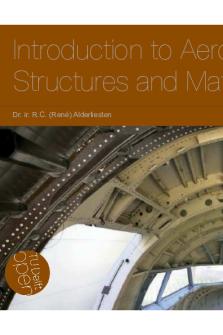
Chapter 10 - aerospace h10
- 32 Pages

AEROSPACE DESIGN
- 438 Pages

Woordenschatlijst h1-h10
- 20 Pages

H10 Case Suitsupply - HF10 Case
- 4 Pages

BDMT108 H10 2002 - para praticar
- 25 Pages

Chapter 10 quiz #10
- 3 Pages

Notes 10 - Chapter 10
- 5 Pages
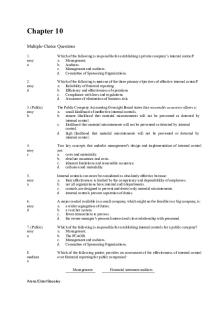
Chapter-10
- 19 Pages
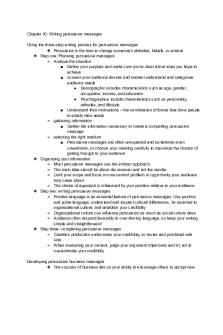
Chapter 10
- 5 Pages
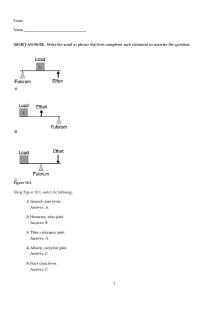
Chapter 10
- 14 Pages

Chapter 10
- 111 Pages
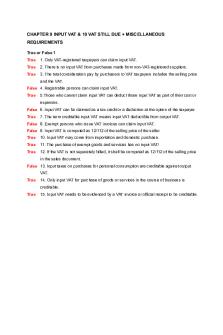
Chapter 10
- 16 Pages
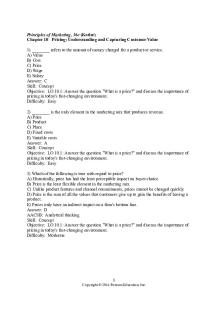
Chapter 10
- 47 Pages
Popular Institutions
- Tinajero National High School - Annex
- Politeknik Caltex Riau
- Yokohama City University
- SGT University
- University of Al-Qadisiyah
- Divine Word College of Vigan
- Techniek College Rotterdam
- Universidade de Santiago
- Universiti Teknologi MARA Cawangan Johor Kampus Pasir Gudang
- Poltekkes Kemenkes Yogyakarta
- Baguio City National High School
- Colegio san marcos
- preparatoria uno
- Centro de Bachillerato Tecnológico Industrial y de Servicios No. 107
- Dalian Maritime University
- Quang Trung Secondary School
- Colegio Tecnológico en Informática
- Corporación Regional de Educación Superior
- Grupo CEDVA
- Dar Al Uloom University
- Centro de Estudios Preuniversitarios de la Universidad Nacional de Ingeniería
- 上智大学
- Aakash International School, Nuna Majara
- San Felipe Neri Catholic School
- Kang Chiao International School - New Taipei City
- Misamis Occidental National High School
- Institución Educativa Escuela Normal Juan Ladrilleros
- Kolehiyo ng Pantukan
- Batanes State College
- Instituto Continental
- Sekolah Menengah Kejuruan Kesehatan Kaltara (Tarakan)
- Colegio de La Inmaculada Concepcion - Cebu


